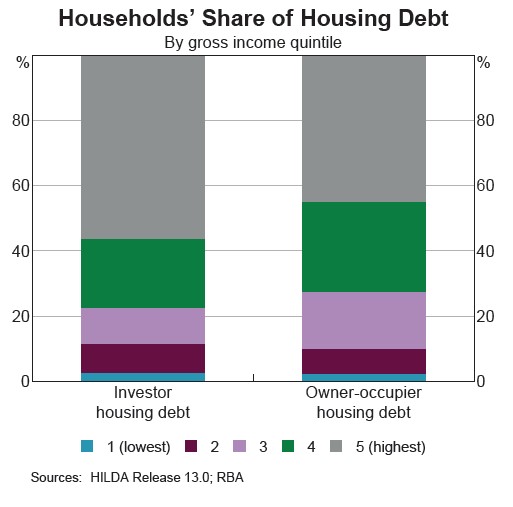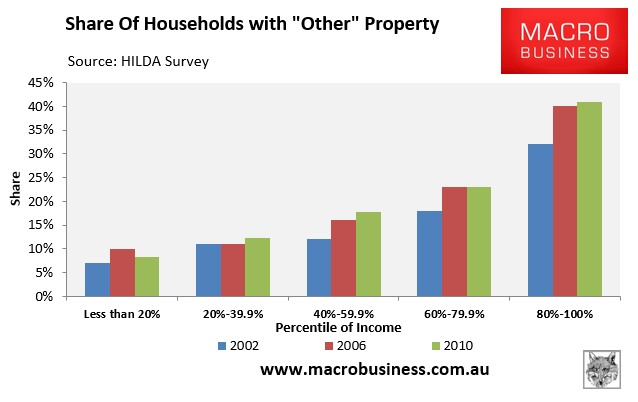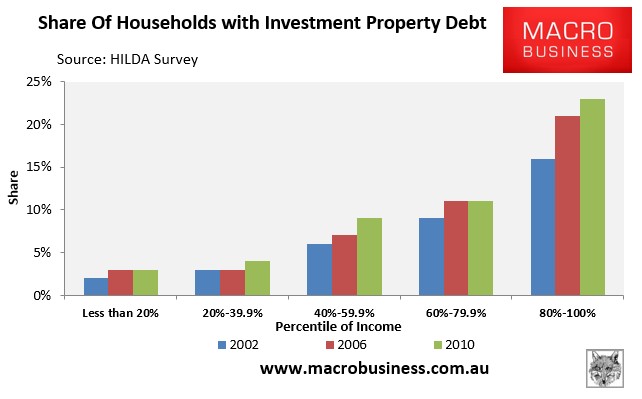Throughout this term of Government, the Coalition has maintained the lie that ‘ordinary’ ‘middle’ Australians are the primary beneficiaries of negative gearing and that unwinding the tax break would represent a direct attack on them.
For example, here’s Scott Morrison, who used to be head of research at the Property Council of Australia, making such a claim last year:
In Australia, private rental accommodation is supported by a large pool of mum and dad investors making private rental stock available, through negative gearing. By number, almost 80% of these investors are middle income Australians earning $80,000 a year or less, owning just one property. They are school teachers, police officers, nurses and office workers saving and investing to provide for their financial security.
And here’s Morrison again attacking Labor on 2GB radio in February:
“[Shadow treasurer] Chris Bowen thinks everyone who’s on negative gearing is on a rort,” he said.
“He thinks they’re big property barons and you’ve got to go and tax them and slam.
“Well, for most middle-income people it is the one chance they’ve got to build some wealth.”
Now the ABC has received a document from the Australian Treasury, under Freedom of Information, which claims most of the windfall from negative gearing and the capital gains tax (CGT) discount goes to high-income earners:
The modelling said more than half of the negative gearing tax benefits go to the top 20 per cent of incomes in Australia.
“Negative gearing benefits high-income families,” the document said.
The report stated those in the bottom 20 per cent were getting just over 5 per cent of negative gearing tax benefits…
Shadow Treasurer Chris Bowen said the documents expose the Government’s scare campaign.
“Treasurer Scott Morrison has a huge amount of explaining to do this morning,” Mr Bowen said.
“He has continued to say that negative gearing predominantly benefits low and middle income earners.
“He is not telling the truth and the Treasury had told him the contrary.
“The Treasurer was told this by the Treasury but has continued to lie about it”…
According to the modelling, the CGT discount “overwhelmingly benefits high-income families”, with the top 10 per cent accounting for nearly three-quarters of the tax savings.
The analysis also says that Labor’s reforms to negative gearing and the CGT discount could provide big benefits to the Budget:
The analysis predicted the combined effect of Labor’s negative gearing and CGT policies could add up to $6 billion a year to the budget bottom line “depending on the increase in new housing construction flowing from the new housing exemption”.
Of course, we shouldn’t be surprised by these results. The RBA’s analysis of the Household Income and Labour Dynamics (HILDA) survey showed that nearly 80% of total investment property debt is held by the top 40% of income earners (see next chart).

The proportion of households owning “other” property (i.e. investment or holiday homes) also rises with income, with 64% of households in the top two income quintiles holding “other” property versus just 21% of households in the bottom two income quintiles (see next chart).

Similarly, 34% of households in the top two income quintiles held investment property debt in 2010 versus just 7% of households in the bottom two income quintiles (see next chart).

Hence, it is clear as day that higher income earners are the primary users and beneficiaries of negative gearing, and that they own the vast majority of Australia’s investment properties.
The Coalition should stop lying.

